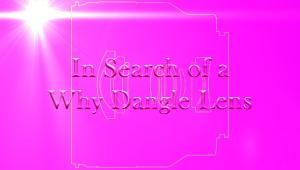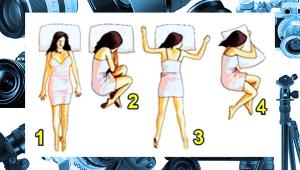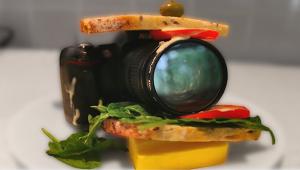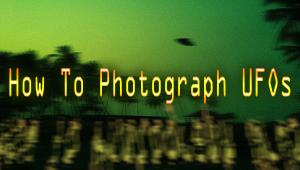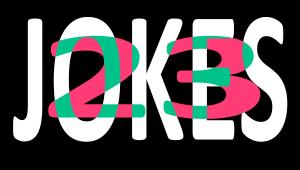QUIZ for Photographers: Cameras by the Numbers

Time to test your camera name recall powers. Take a look at the list of model numbers below and identify the camera each represents. Hint: none are digital. Scroll down to read the answers and a little bit of history. No cheating! Like my junior high school shop teacher, Three-Fingers Clark, used to say, “When you cheat you only hurt yourself, but when you mess up with a table saw you get a nickname.”
Japanese camera manufacturers love naming cameras with numbers. But then again, this is a country whose best wartime aircraft was named the Zero. They also seem particularly fond of the Roman letters X and A either as a prefix or a suffix and sometimes even together.
We’ve selected 10 film camera models that were popular and widely known in their day. And we’re pretty sure that these names were used by one and only one manufacturer. Can you identify the camera brand they designate?
1. IIIa
2. 1000DTL
3. SR-7
4. K1000
5. C35
6. N2020
7. 500EL/M
8. OM-1
9. 2.8F
10. AE-1
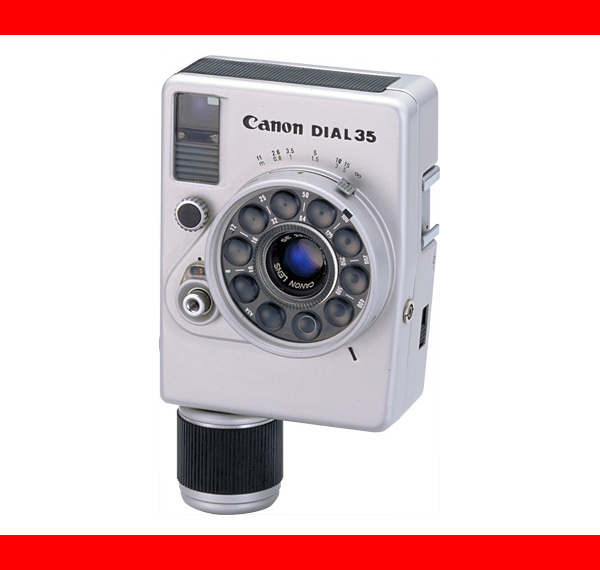
 1. Leica IIIa
1. Leica IIIa
Also known as the Model G, the Leica IIIa dates back to 1935 and is an original Oskar Barnack design. In the era of bulky large format and roll-film cameras, the first comparatively tiny Leicas used the roll-ends of 35mm cinema film leftover from moviemaking. Appreciate the juxtaposition. The Leica IIIa was a sports car running circles around a semi-tractor trailer rig.
I carried a Leica IIIa through most of my college years. Bought it at a jewelry store on Maxwell Street in Chicago for $9. It came with a Leitz 50mm f/2 Summar lens that was missing the diaphragm assembly. Great soft-focus lens but otherwise worthless. I bought a replacement Leica lens from Goldblatt’s Department Store in Hammond, Indiana. I paid $20 for another 50mm Summar because I couldn’t afford $30 for the more highly regarded 50mm f/3.5 Elmar.
I recently discovered that the Leica IIIa with 50mm f/2 Summar has been enshrined in the National Museum of American History, Behring Center, which is part of the Smithsonian Institution. At 17-years-old I had no idea that I experiencing history firsthand.
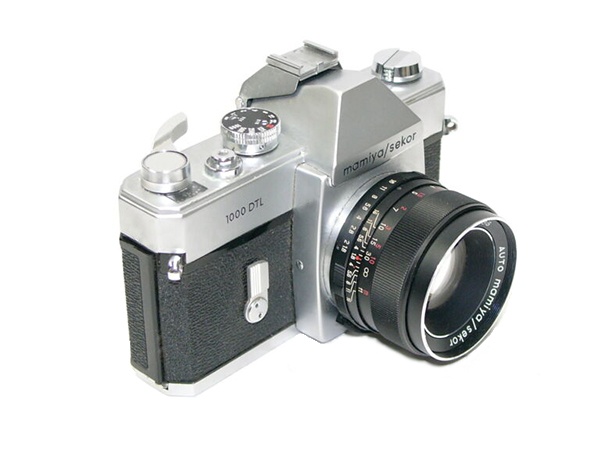 2. Mamiya-Sekor 1000DTL
2. Mamiya-Sekor 1000DTL
Sporting a Pentax-compatible M42 threaded lens mount, the Mamiya-Sekor 1000DTL and its sibling the 500DTL were durable, no-frills 35mm SLR cameras that were solid and anything but stylish. They were reliable, though, and great cameras for beginners. The 1000DTL had a top shutter speed of 1/1000 sec, hence the name.
Altman Camera in Chicago sold them by the ton in the mid-1970s. If you don’t know about Altman Camera, I’ll just say that Altman’s stocked everything. I’m not exaggerating. If a camera, lens or accessory existed anywhere on the planet, Altman’s had it either in stock or on order. Every camera brand and every lens was on display. The assortment of used cameras, which changed daily, had to be the most extensive in the world. And that was just the first floor. Movie gear and tripods were on the second floor and darkroom stuff on the third.
(If you’re an Altman Camera Alum—either customer or employee—leave a comment and let us know about it. Altman’s closed 45 years ago, in May 1975. It was one of the Seven Wonders of the World of Photography, if there was such a thing.)
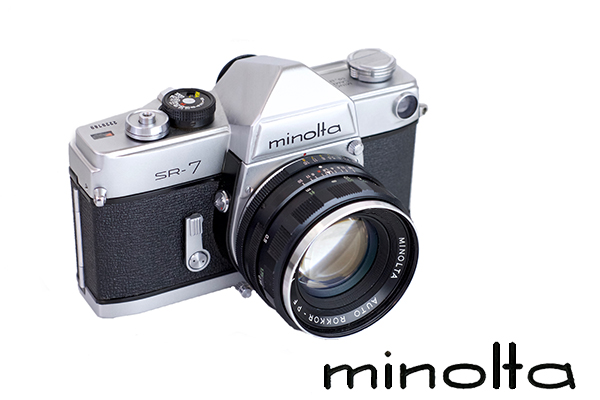
3. Minolta SR-7
The world’s first SLR camera with a built-in light meter, the Minolta SR-7 had a CdS (Cadmium Sulfide) metering cell positioned on the front of the camera body. Alas, it was not TTL (through-the-lens) metering but it was enormously better than using a handheld or clip-on meter.
Minolta had great affinity for the number 7 and used it on many cameras throughout their ill-fated history. I’m guessing that the Minolta engineers who migrated to Sony to develop the world-renowned Sony Alpha 7 series carried that tradition along with them on their journey from Sakai to Tokyo. But then again, 7 is considered a lucky number in many cultures, so I could be wrong.

4. Pentax K1000
A conservative estimate of how many 35mm Pentax K1000 cameras were sold into the hands of photography students and beginners worldwide is around 15 gazillion. Fully manual and with a top shutter speed of 1/1000 sec, this no-frills workhorse allowed novices to control all settings manually and thereby learn the consequences of changing the aperture, shutter speed, ASA (ISO) and so forth. Design concept and body similarities were cloned from Pentax’s SP1000 model in the Spotmatic series.
Question for 21st century photographer teachers—which camera(s) do you recommend for beginning students nowadays?
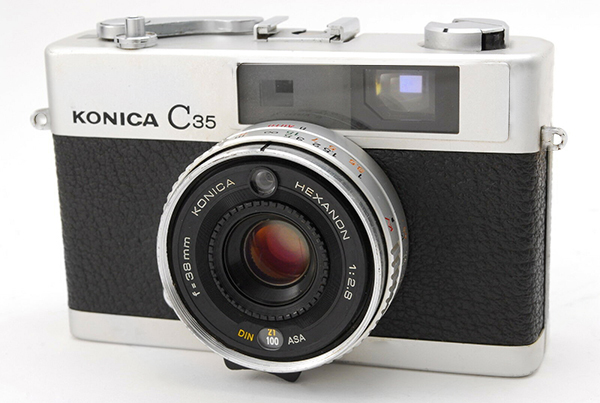
5. Konica C35
Often advertised for $79 with the slogan “The lens alone is worth the price,” the Konica C35 in its many incarnations (C35AF, C35EF, etc.) still commands a relatively high price on eBay. Fitted with a sharp 38mm f/2.8 four-element Hexanon lens and an adequate rangefinder, the C35 was very compact and easy to carry. It’s still a great picture-taker and highly prized by those who own one.
I write that it had an “adequate rangefinder” but in truth the rangefinder base was approximately 12mm, so short that you could match the accuracy simply by guessing between “near and far.” But the depth-of-field of the 38mm lens carried the day, and people got sharp pictures.
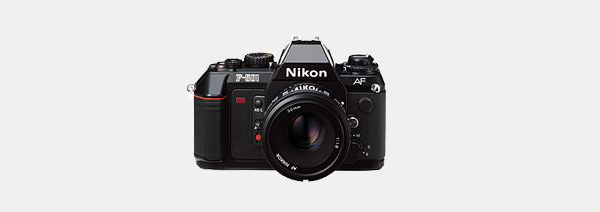
6. Nikon N2020
Sold under the model number Nikon F-501 outside the US, the N2020 has the distinction of being Nikon’s first mass market 35mm SLR autofocus camera. The image above, from Nikon’s website, is the F-501 version.
You can read more about Nikon’s development of AF for their SLR cameras by visiting the history section of their website. Although Minolta produced the first commercially successful SLR camera with body-integral autofocus in 1985, Nikon presented a prototype of an interchangeable lens equipped with built-in autofocus mechanism (AF Nikkor 80mm f/4.5) at a trade show in Chicago in April 1971.
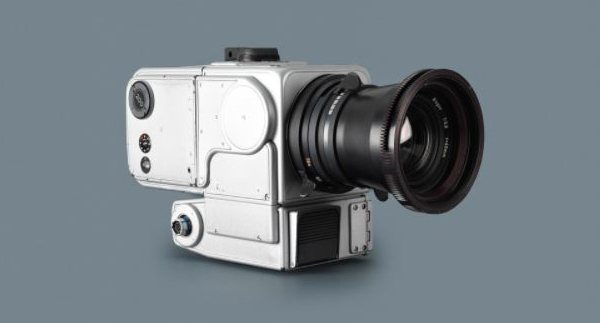
7. Hasselblad 500EL/M
Astronaut Walter Schirra was a hobby photographer who owned a Hasselblad 500C. Somehow he managed to convince NASA that a medium-format ‘blad would take better pictures in space than a 35mm camera. Schirra photographed Earth with a specially-modified Hasselblad 500C during his six orbits aboard the Mercury 8 in October 1962. Modifications included weight-reduction measures and a 70-exposure film magazine. More Americans went into space, and so did more Hasselblads. In fact, electronic Hasselblad 500EL cameras went to the moon with Apollo astronauts Armstrong, Aldrin and Collins. Per the history pages on Hasselblad’s website, Approximately 76,700 500C bodies were produced between 1957 and 1970.
With those historical beginnings, the Hasselblad 500EL/M was very popular for terrestrial photos on Earth. The 500EL/M was introduced in 1971 with interchangeable focusing screens. It was followed by the 500ELX in 1984, the 553ELX in 1988, and 555ELD in 1998.
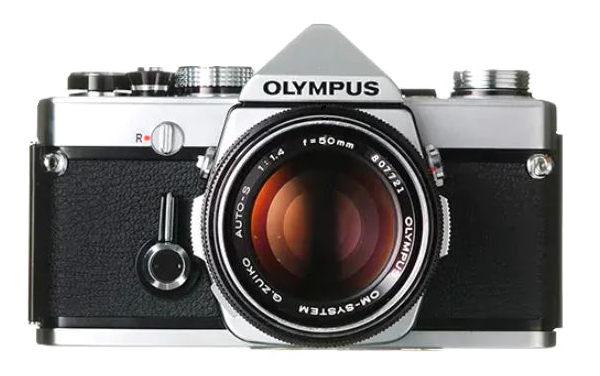
8. Olympus OM-1
Two revolutionary cameras that represent photography’s successful pursuit of compact size without compromise of functionality were born of Olympus. The Olympus OM-1, a compact, light weight single lens reflex 35mm camera appeared in 1972, and the small, durable Olympus XA 35mm camera went on sale in 1979. These archetypes live on forever in the annals of photographic history. BTW, that’s an XA pictured at the top of this story.
The Olympus Pen F, a half-frame 35mm camera that was introduced in 1963, lent its name, body styling and panache in 2016 to the Olympus Pen F, a 20-megapixel, Micro four-thirds digital camera. The future of Olympus camera may be uncertain, but the past was certainly brilliant.
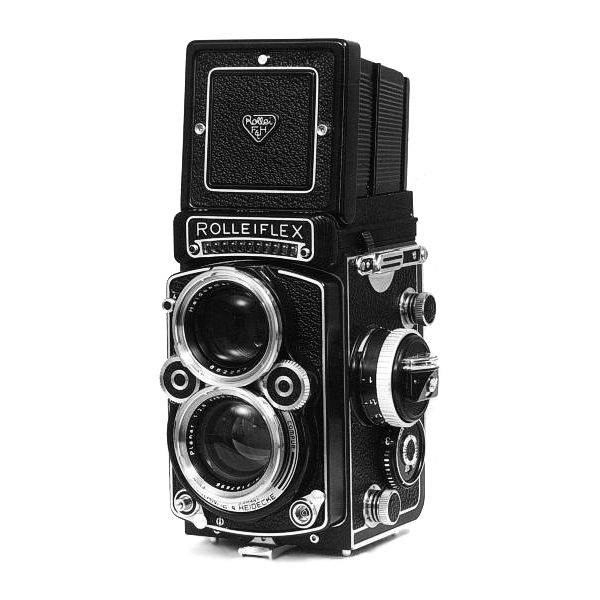
9. Rolleiflex 2.8F
A marvel a German engineering and manufacturing skill, Rolleiflex cameras were among the highest quality intrinsically and in terms of performance. With superb lenses and big 6x6 cm medium-format negatives, Rolleis were popular among wedding photographers, photojournalists and advanced amateurs who sought superior results. Classified in the TLR, or Twin Lens Reflex category, they featured a stacked lens construction. Focusing was done through the top lens while exposure happened through the bottom lens. This means the photographer could see the subject at the precise instant of exposure because, unlike a 35mm SLR camera, there was no mirror flipping in and out of the light path.
The Rolleiflex 2.8F model appeared first in 1960 and continued with only slight modifications until the 1980s. The original 2.8F had a Zeiss Sonnar lens and can be distinguished from earlier models by the coupled exposure meter and removable focusing hood.
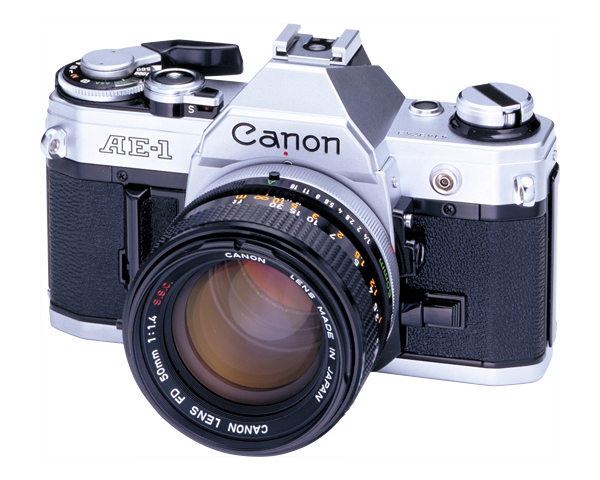
10. Canon AE-1
One of the most influential cameras ever made, the Canon AE-1 and its tag line, “So advanced, it’s simple” debuted in 1976. The Canon AE-1 was the world’s first camera with an embedded microcomputer, and although its detractors were quick to point out that the top cover of the camera was made of plastic, it sold like popsicles in hell.
Canon was arguably the first to blow the lid off of the Japanese camera naming conventions when they introduced a 35mm film camera with a name and no number, the Canon Rebel, in 1990. That was its moniker in North America—the rest of the world wasn’t quite yet ready to live without a numerical name so they labeled it the Canon EOS 1000 for those guys.
Canon had dabbled with names instead of numbers a few times as early as 1963. Most notable to me is the Canon Dial 35, a magnificent spring-loaded windup 35mm half-frame camera that produced negatives that were 18 x 24mm. Of course, the Canon SureShot was another market disrupter with a name, not a number. Introduced in 1979, it was the world’s first Lens-Shutter 35mm autofocus camera (take that, Honeywell).
Minolta came close to upsetting the naming paradigm in 1985 with the Maxxum, but they just couldn’t overcome the compulsion to put a number after it, ergo the Maxxum 7000.
For the record, when I worked at Minolta and we were preparing the launch of the budget-model Maxxum four years before the Canon Rebel (the 35mm film version, not the later Digital Rebel) I proposed that we name the Maxxum 5000 the Maxxum “Jet.” I thought a name would be more popular than a number, especially with young people. But the die had already been cast (probably literally, too, now that I think about it) because of the other two Maxxums in the lineup, the Maxxum 7000 and Maxxum 9000. The Maxxum camera series was known as Dynax in Europe and Alpha in Japan. See Sony lovers? The name Alpha was born back in the mid 1980s, Only from the Mind of Minolta.
—Jon Sienkiewicz
(As an Amazon Associate, Shutterbug earns from qualifying purchases linked in this story.)




